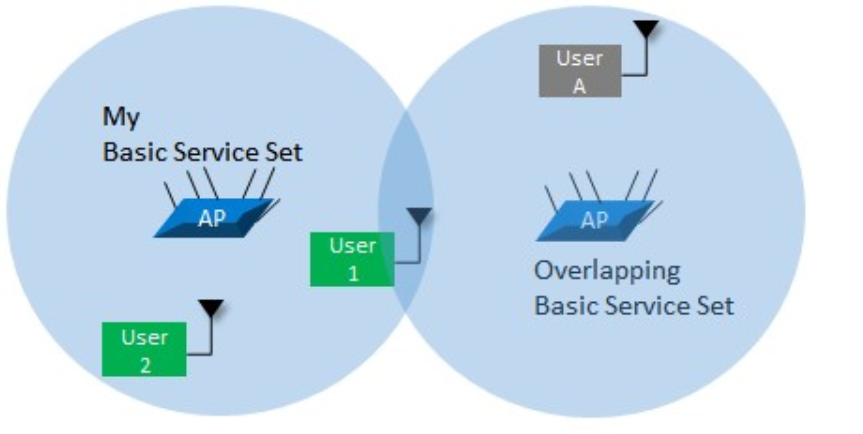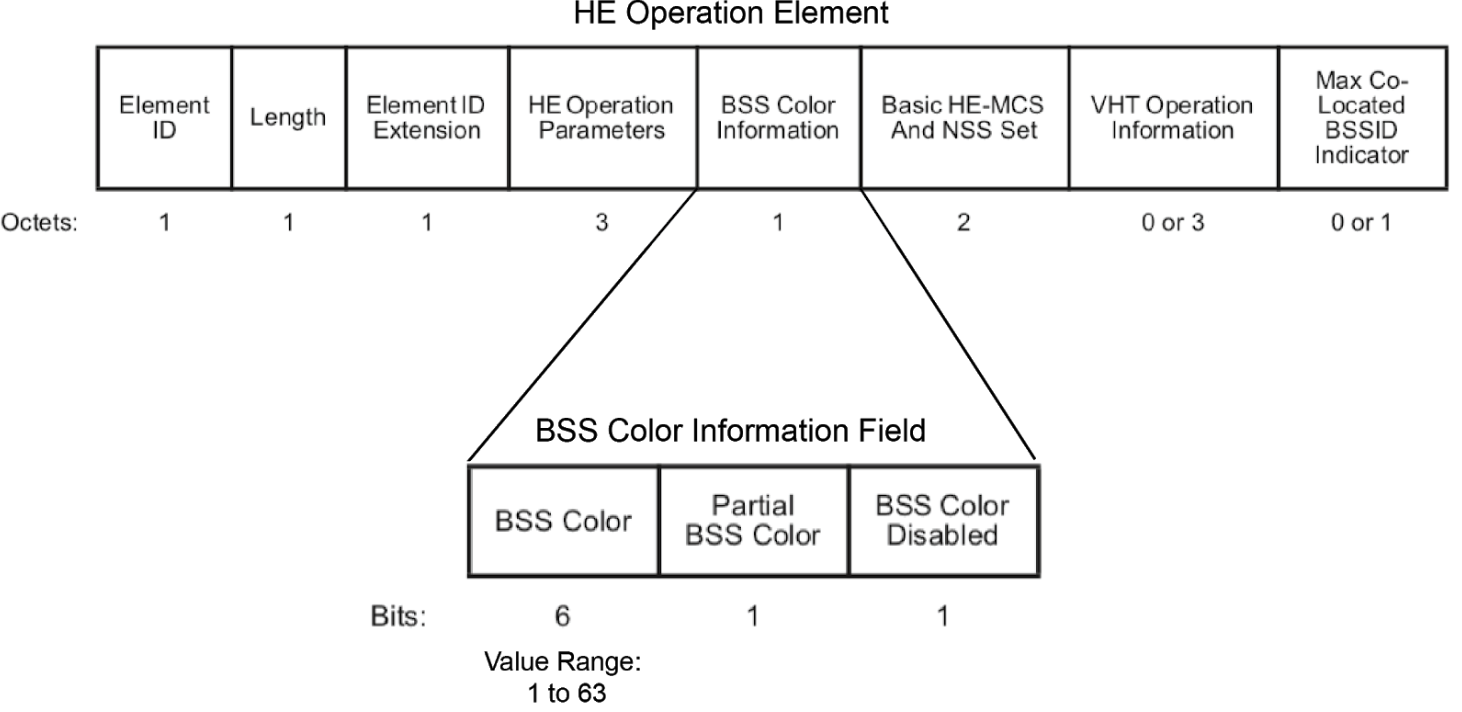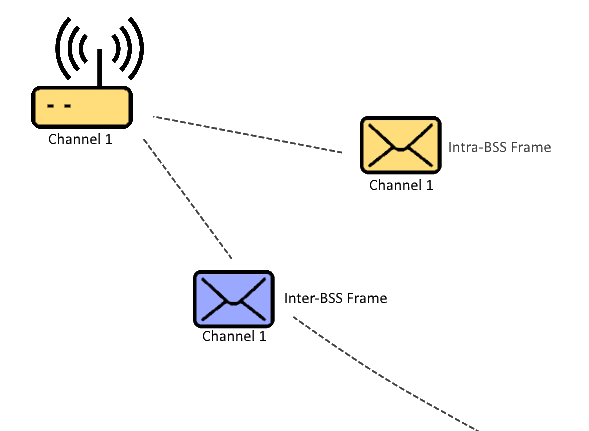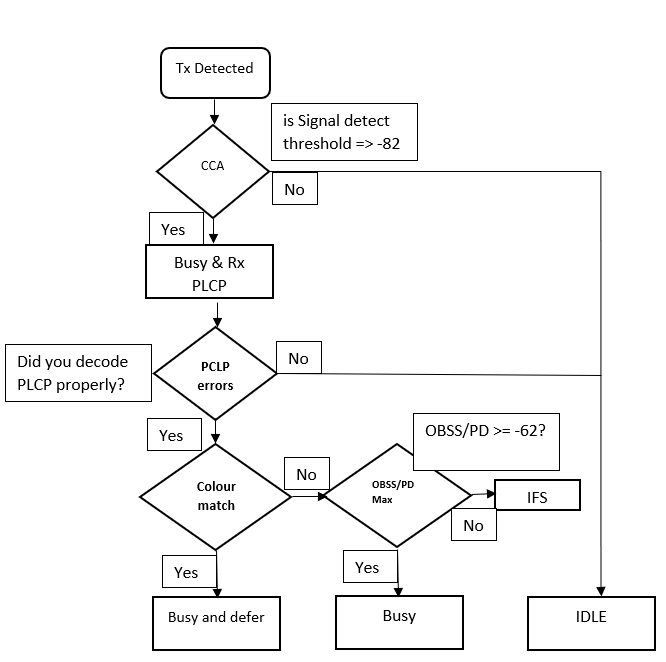BSS Colouring or Spatial reuse (802.11ax AKA WiFi6) - WiFi
802.11ax or WIFI6 final specifications from WIFI alliance is yet to be announced. 802.11ax access points and client devices are already in the market.
802.11ax bringing us efficiency with the help of techniques such as OFDMA by better use of spectrum, improving spatial reuse also known as BSS colouring etc. We can read a lot of good articles and blogs from different sources on other WiFi 6 topics such as OFDMA, but I want to talk about BSS colouring in this post and try to make it easier to understand.
WIFI is Half Duplex:
We all know that 802.11 communication is half duplex which means at one given time a station can only transmit or receive. You cannot transmit and receive at the same time that’s why it called as half duplex.
CSMA/CA (Carrier sense with multiple access collision avoidance):
Because the way 802.11 communication works every station must wait for other station to complete communication before it can transmit. This is achieved by CSMA/CA mechanism.
CSMA/CA introduces its own challenges such as:
- Contention overhead
- Airtime utilization which consumes a lot of bandwidth
Instead of going in more details that how CSMA/CA works lets focus on 802.11ax BSS colouring. BSS colouring is not replacing CSMA/CA but making better use of it.
OBSS (Overlap Basic service set):
Overlapping BSS is what we can see in the image below. It’s the service set which can be seen by other access points nearby or client devices connected to access point.

If both BSS working on the same channel it means CSMA/CA mechanism will affect both overlapping BSS. Clients and access points will have to contend for the medium and wait for it to be free. This is where BSS colouring will help achieve better performance.
Intra-BSS frame VS Inter-BSS frame:
BSS colouring is not a new concept infect it has been used in 802.11ah already. 802.11ax specification bringing mix of good technologies together.
BSS colouring enables devices to identify their own BSS against OBSS (Overlap BSS) with the help of frame MAC header. BSS colour is not a colour such as blue or white colour but it’s a 6 bits field which can have value range from 1 to 63.

(BSS colour information field)
Intra-BSS frame:
CSMA/CA mechanism let the devices listen to 802.11 communication and talk when everyone is quiet. BSS colouring allow the stations to understand whether transmitting station is from its own BSS or OBSS (overlap BSS). If frame colour or colour bit is same, then it will be considered as intra-BSS frame and station will have to contend for the medium as normal process.
Inter-BSS frame:
If BSS colour of the frame is different from listening station’s BSS colour, then this frame will be considered as inter-BSS frame. Now here is the difference between 802.11ax and legacy amendments where stations had to contend for the medium whether frame was from same BSS or OBSS.
If station learns that this frame is from OBSS then it will ignore it and will not contend for the medium and will continue transmitting.
This mechanism allows 2 stations to communicate at the same on same channel in a different BSS.

(Inter-BSS frame vs Intra-BSS frame)
BSS colouring decision making:
- Station detect RF energy.
- Clear channel assessment suggests whether energy threshold is above -82 or below.
- If RSSI greater than -82 and station checks whether it can demodulate traffic?
- If yes, then it will read frame header to see colour of the frame.
- If its same colour, then its means frame is from intra-BSS and will have to go through normal CSMA/CA process.
- If colour is not same as its own BSS, then it’s an inter-BSS frame.
- At this point there is another threshold check, it checks if signal strength of frame is above -62 or below.
- If signal strength is greater then -62 its mean its too close and medium will be consider as busy.
- If signal strength is lower than -62 then station will not contend for this transmission and will continue transmitting.

(BSS colouring decision process)
BSS colouring or Spatial Reuse Benefits:
- Increase capacity
- Adaptive CCA can adjust signal level threshold
- Decrease channel contention problem
- Signals with same BSS colour use a low RSSI threshold for deferral, therefor reducing collision in same BSS.
- Signals with OBSS use a higher RSSI threshold for deferral, therefor allowing more simultaneous connection
- It provides some degree of ubiquities fairness
Consideration:
Its is important to understand that to make best use of this capability, we will have wait and see that how service providers or vendors are going to implement this. In order set OBSS/PDmin and OBSS/PDmax thresholds a WLAN infrastructure will need to have accurate view of the network in which clients are operating. If all variables work together it can help achieve QOE (quality of user experience) and capacity at same time.
Post Views: 11,252
Posted in Wi-Fi Blog





 802.11ax(WiFi6)通过引入如OFDMA等技术提高效率,改善空间复用(BSS色彩)。BSS色彩并不替代CSMA/CA,而是优化其使用。它允许设备识别自己的BSS与重叠BSS,减少在同一频道上的冲突,提高容量和性能。当帧颜色不同,设备将忽略并继续传输,从而实现不同BSS间的并行通信。
802.11ax(WiFi6)通过引入如OFDMA等技术提高效率,改善空间复用(BSS色彩)。BSS色彩并不替代CSMA/CA,而是优化其使用。它允许设备识别自己的BSS与重叠BSS,减少在同一频道上的冲突,提高容量和性能。当帧颜色不同,设备将忽略并继续传输,从而实现不同BSS间的并行通信。

















 被折叠的 条评论
为什么被折叠?
被折叠的 条评论
为什么被折叠?








